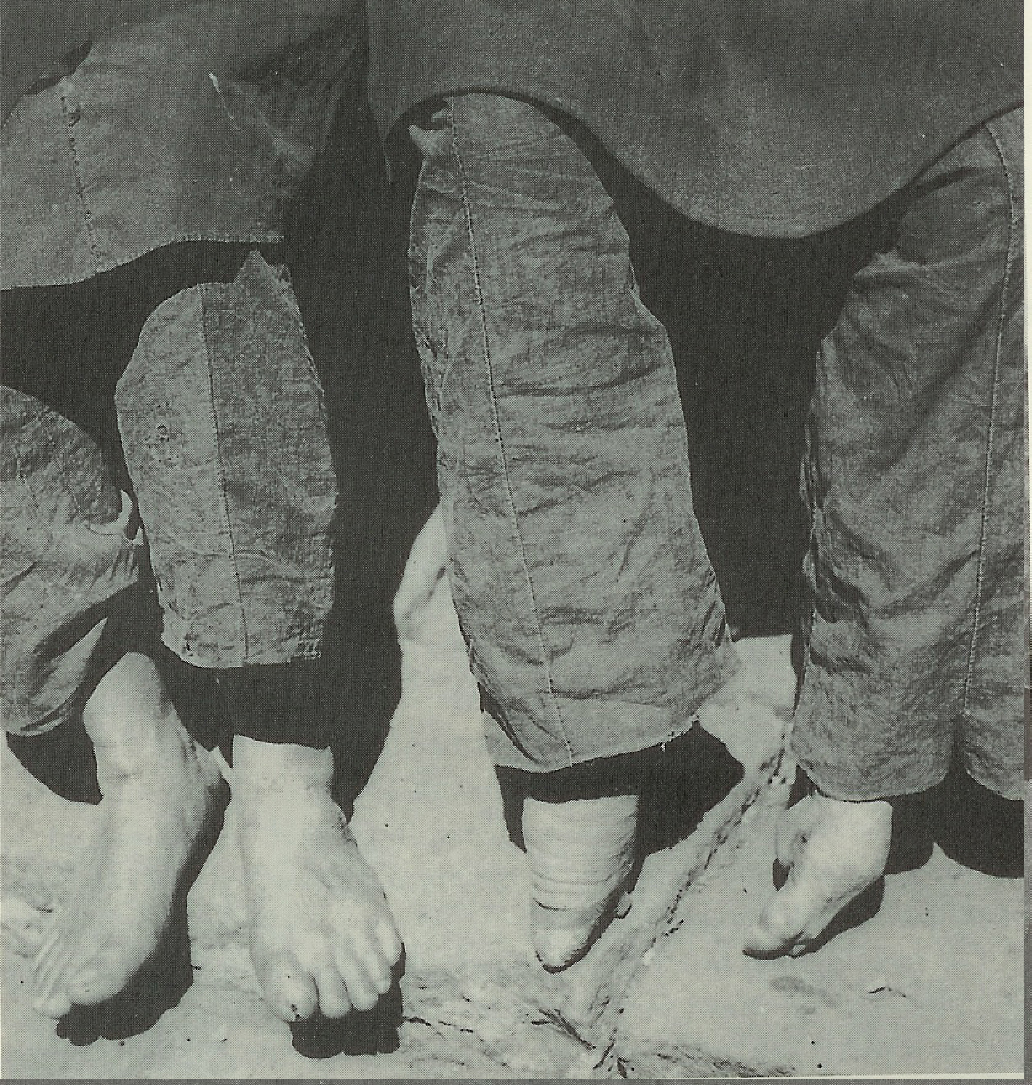FOOTBINDING IN CHINA
|
Annointed with fragance, she takes lotus steps;
Though often sad, she walks with swift lightness.
She dances like the wind,
leaving no physical trace.
Another stealthily tries on this palace style,
but feels such distress when she tries to stand;
So wondrously small they defy description,
Unless placed in the palm.
-Su Shi (1036-1101)

The origin of footbinding in China is a mystery. No one really knows who
started this tradition for sure.
Serious investigation into footbinding
was not really conducted until it became criticized in public and outlawed
in the early 20th Century.
Chinese footbinding has been linked as far back as the 21st Century B.C.
during the Xia dynasty. It was a legend during this time that a fox was
sent down from heaven to rid the earth of corruption. The fox was changed
into a woman, but her feet could not be changed. So, she covered them with
fabric, and they made small prints in the ground when she walked. The
other women wanted her beauty, so they began wrapping their feet to acheive
a small size like hers.
This tradition continued for centuries. Women became more willing to bind
their feet to be beautiful no matter how much it pained them. The whole
practice was seen as a way to gain the attention of Chinese men who mostly
believed women's feet should be tiny and dainty as most women of the time
were.
These women passed the tradition onto their daughters who at first resisted
because of the pain. The process involves tightly wrapping long pieces of
cloth around each foot, and then sewing the pieces together. A decorative
shoe-shaped cloth with laces was put over the cloth and tightened as the
foot became smaller. Eventually, the bones in the foot broke and the flesh
bled and rotted until the foot became smaller. Women were encouraged not to
walk their heels. A three-inch foot or shorter was the most envied.
Rotting of the flesh caused a bad smell, and perfumes were used to mask the
smell. Chinese women who practiced footbinding never went without their
shoes or bindings.
For more information on footbinding, visit the Resources page, and click San Francisco Museum - Footbinding
|
|

